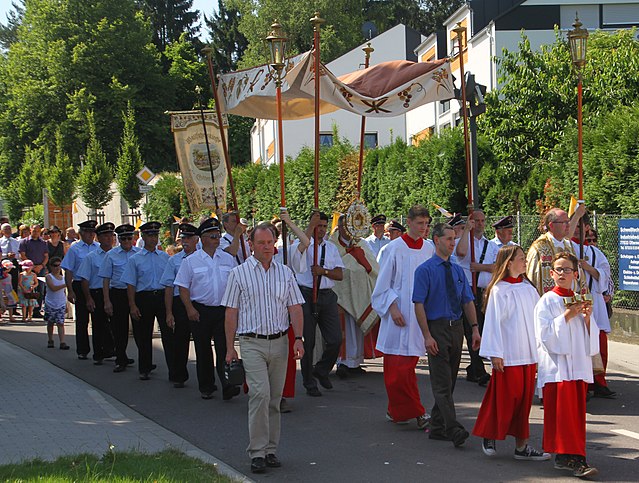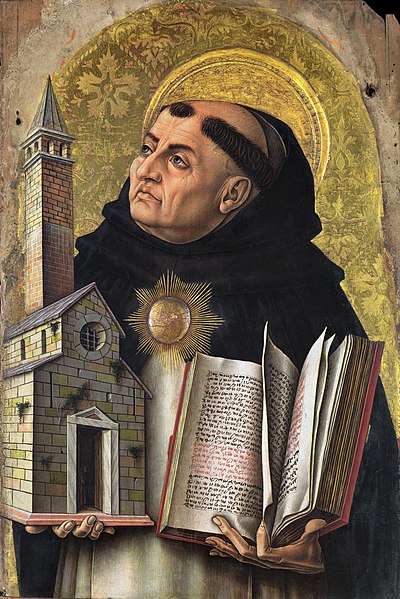The Feast of Corpus Christi, also known as the Solemnity of the Most Holy Body and Blood of Christ, is a Christian liturgical solemnity celebrating the Real Presence of the Body and Blood, Soul and Divinity of Jesus in the elements of the Eucharist; it is observed by the Latin Church, in addition to certain Western Orthodox, Lutheran, and Anglican churches. Two months earlier, the institution of the Eucharist at the Last Supper is observed on Maundy Thursday in a sombre atmosphere leading to Good Friday. The liturgy on that day also commemorates Christ's washing of the disciples' feet, the institution of the priesthood, and the agony in the Garden of Gethsemane.
Corpus Christi procession. Oil on canvas by Carl Emil Doepler.
A stained glass window in the Saint Mary Basilica in Tongeren
Silver-gilt Corpus Christi monstrance of Toledo, Spain
Procession in Ottersweier, Germany
Thomas Aquinas was an Italian Dominican friar and priest, an influential philosopher and theologian, and a jurist in the tradition of scholasticism from the county of Aquino in the Kingdom of Sicily.
Panel of an altarpiece from Ascoli Piceno, Italy, by Carlo Crivelli (15th century)
The Castle of Monte San Giovanni Campano
Thomas is girded by angels with a mystical belt of purity after his proof of chastity. Painting by Diego Velázquez.
Triumph of St Thomas Aquinas, Doctor Communis, between Plato and Aristotle, Benozzo Gozzoli, 1471. Louvre, Paris.








